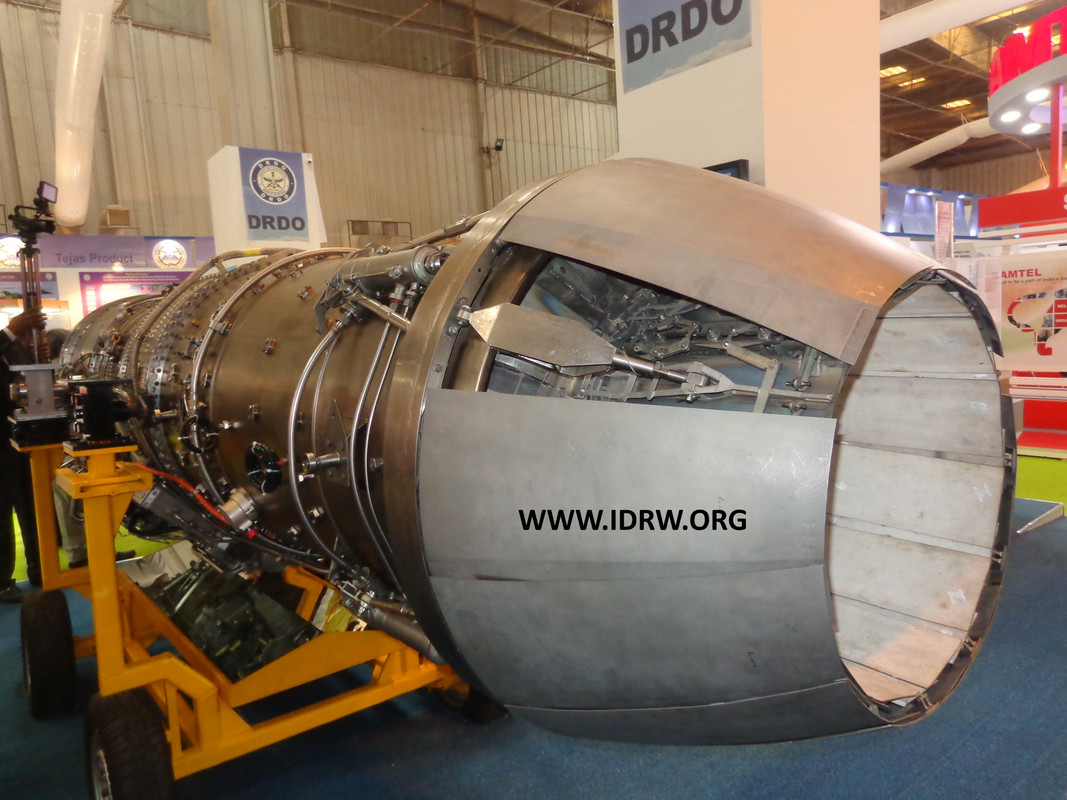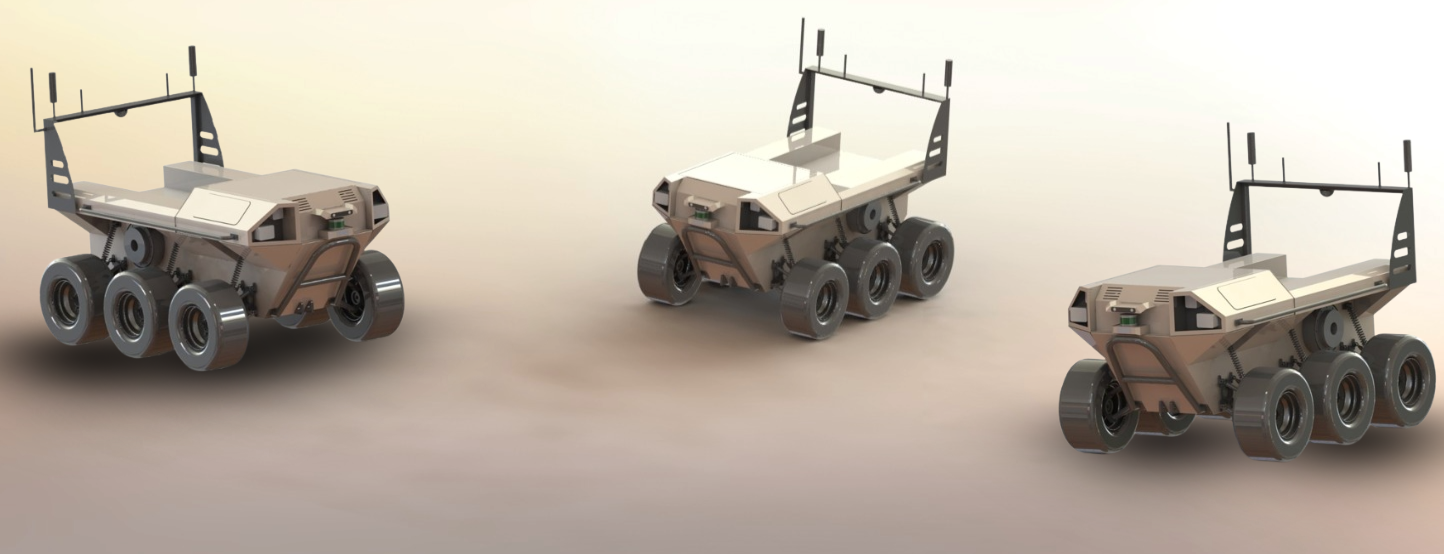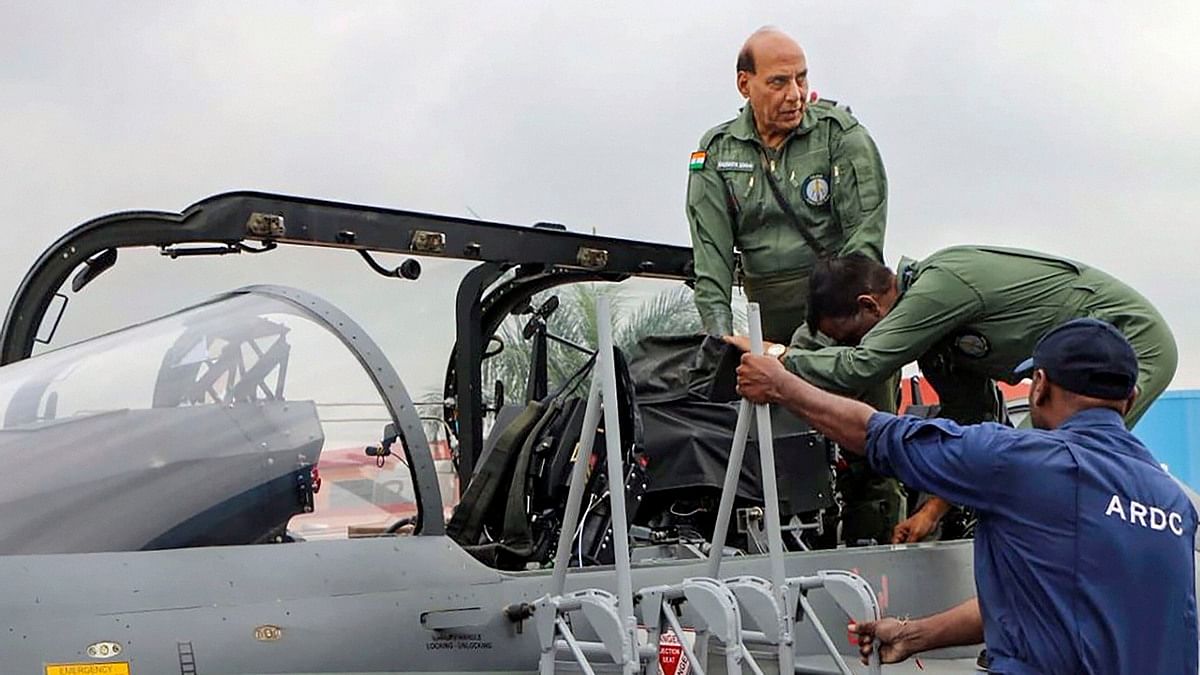SOURCE: RAUNAK KUNDE / NEWS BEAT / IDRW.ORG

In a significant development, Dr. Samir V. Kamat, Secretary of Defence Research and Development (DD R&D) and Chairman of the Defence Research and Development Organisation (DRDO), has announced plans to integrate a Dry Kaveri engine derivative into the LCA-Tejas Trainer aircraft. This integration will serve as a crucial step in advancing India’s indigenous engine technology, though it is not intended as a replacement for the existing F-404 engines in operational fighter jets.
The integration of the Dry Kaveri engine derivative into the LCA-Tejas Trainer aircraft is part of a coordinated effort between DRDO and the Gas Turbine Research Establishment (GTRE). This initiative aims to utilize the trainer aircraft as a Flying Testbed, enabling extensive testing and refinement of the engine in real-flight conditions.
Continue readingSOURCE: RAUNAK KUNDE / NEWS BEAT / IDRW.ORG

Hindustan Aeronautics Limited (HAL) is gearing up for the commencement of manufacturing for the Saras MkII, a 19-seater aircraft designed to bridge air connectivity gaps in India’s hinterland regions. This indigenous project, spearheaded by the Council of Scientific and Industrial Research-National Aerospace Laboratories (CSIR-NAL), is poised to take Indian civil aviation to new heights.
The project is expected to gain significant momentum later this year with the release of the final aircraft drawings. CSIR-NAL has already placed orders for crucial components and avionics, paving the way for a smooth transition into manufacturing.
Continue readingSOURCE: RAUNAK KUNDE / NEWS BEAT / IDRW.ORG

The Defence Research and Development Organisation (DRDO) has taken a significant step forward in protecting Indian soldiers with the development of lightweight add-on composite armour for the WhAP 8×8 wheeled armoured platform. This innovative technology offers several advantages and positions India at the forefront of indigenous defence solutions.
The new armour, designed specifically for the WhAP, significantly enhances the vehicle’s survivability. When integrated with the existing vehicle structure, it protects against ballistic threats as defined by STANAG 4569 at Level II and Level III. This translates to increased crew safety against a wider range of weaponry.
Continue readingSOURCE: AFI

Unearthed archival footage sheds light on a pivotal moment for both the Indian Army and the Russian T-90 tank program. In 1999, the Uralvagonzavod factory in Russia faced a period of significant difficulty. However, a crucial contract with India for the T-90S tank would become a lifeline for the program.
In 1997, India expressed interest in acquiring the T-90S tank. However, their requirements were specific. They sought a tank equipped with a powerful 1,000-horsepower engine and a thermal imaging sight for enhanced battlefield awareness during night operations. Unfortunately, the base T-90S model offered by Russia at the time lacked these features.
Continue readingSOURCE: AFI

China’s recent infrastructure developments in Tibet have raised eyebrows in India, particularly the expansion of air bases near disputed border regions. These developments, coupled with comments from a Chinese test pilot, suggest China might be testing new technologies for operating advanced aircraft at high altitudes.
State media in China quoted Li Gang, a J-20 fighter jet test pilot, highlighting ongoing improvements to the J-20’s capabilities. This coincides with reports of China’s focus on air bases near the borders with India, including Shigatse, Lhunze, and Burang. Notably, the Shigatse base is strategically located close to the Doklam plateau, a recent flashpoint between Indian and Chinese troops.
Continue readingSOURCE: AFI
In a recent statement, Squadron Leader (Retired) Sadrul Ahmed Khan, who serves as a member of the Finance and Planning Affairs Sub-Committee of the Bangladesh Awami League, highlighted the ongoing efforts by the United States to acquire Saint-Martin Island for establishing a naval base. He emphasized that this is not a new development, as Awami League leader Sheikh Hasina has repeatedly brought up this issue in various forums and gatherings, reinforcing the party’s strong opposition to such plans.
The US has long maintained legitimate military ties with Bangladesh, characterized by regular visits and joint exercises between the forces of both nations. These collaborations have primarily focused on peacekeeping operations, humanitarian aid, logistical exercises, and assistance to civil power, all of which are well within the acceptable framework of bilateral cooperation. However, the proposal to establish a naval base on Saint-Martin Island represents a significant deviation from these peaceful and cooperative activities.
Continue readingSOURCE: AFI

Canada is intensifying its efforts to combat foreign interference, with a recent report highlighting China and India as the most active countries involved in such activities. The report underscores the growing concerns about the influence of foreign powers on Canada’s domestic affairs and the steps being taken to safeguard national sovereignty.
The report, which has garnered significant attention, indicates that both China and India have been particularly active in attempts to interfere in Canadian politics, society, and economy. These activities range from cyber espionage and economic coercion to political influence operations and information manipulation. The findings have prompted a renewed focus on strengthening Canada’s defenses against such interference.
Continue readingSOURCE: IDRW.ORG.

Edgeforce Solutions Private Limited, a Hyderabad-based company, is making significant strides in the field of demining with its innovative Remotely Operated Mine Protected Vehicle (ROMP-V). This unmanned platform holds immense potential for revolutionizing mine clearance operations, safeguarding personnel and enhancing efficiency.
The ROMP-V is a specialized mission support platform specifically designed to tackle the complexities of mine clearance. Remote operation eliminates the need for personnel to enter hazardous minefields, significantly reducing the risk of injury or death from detonations.
Continue readingSOURCE: IDRW.ORG.

Former Indian Air Force Chief, Air Chief Marshal RKS Bhaduria, has shed light on the aerial tensions during the 2021 standoff with China near Ladakh. In a recent statement, he revealed that the Rafale fighter jets, India’s most advanced aircraft at the time, played a central role.
According to Bhaduria, when the situation escalated, the Rafales were India’s strongest aerial defense. He further stated that China responded swiftly to their deployment. As soon as the first Rafale landed in Leh, China reportedly deployed four of their latest J-20 stealth fighters. This tit-for-tat escalation continued, with China deploying 20 J-20s by the time India had positioned four Rafales.
Continue readingSOURCE: AFI

Veda Aeronautics, a rising star in India’s defense startup scene, is making strides in the crucial area of counter-drone technology. The company is currently developing an interceptor missile designed to be launched from Medium-Altitude Long-Endurance (MALE) and High-Altitude Long-Endurance (HALE) Unmanned Aerial Vehicles (UAVs).
This interceptor missile system aims to address the growing security concern posed by unauthorized drones, also known as UAVs. These drones can be used for malicious purposes like surveillance, espionage, or even attacks.
Continue readingSOURCE: AFI

Cochin Shipyard Limited (CSL) has released a new image showcasing the significant progress made on its colossal new dry dock. This state-of-the-art facility is rapidly approaching completion, poised to become a game-changer for India’s shipbuilding and ship repair capabilities.
A key aspect of the project’s progress involves the installation and commissioning of a massive 600-ton gantry crane. This powerful crane will be instrumental in handling the large vessels the dry dock is designed to accommodate.
Continue readingSOURCE: AFI

As Rajnath Singh, the current Defence Minister of India, turns 73 this year, the conversation around his effectiveness and the future direction of the ministry gains renewed focus. Singh’s tenure has been a mixed bag, with several achievements and notable criticisms. In particular, comparisons with his predecessor, Manohar Parrikar, highlight areas where some believe Singh’s leadership has fallen short.
Manohar Parrikar, who served as Defence Minister from 2014 to 2017, is often credited with initiating significant reforms and promoting the Indianization of the defence sector. Parrikar’s approach endeared him to both public and private defence companies in India, as well as to defence analysts and researchers. His tenure was marked by a push for self-reliance and modernization, setting ambitious targets for the Defence Research and Development Organisation (DRDO) and upgrading government defence Public Sector Undertakings (PSUs).
Continue readingSOURCE: AFI

As global space security threats escalate, India is proactively bolstering its military space capabilities. The strategic move comes in response to the increasing militarization of space by various nations, necessitating a robust and comprehensive approach to safeguard national interests in this critical domain.
Space has become an arena of strategic competition, with countries like the United States, China, and Russia significantly enhancing their military space programs. These advancements pose potential threats, ranging from the disruption of satellite communications to more direct anti-satellite (ASAT) attacks. Recognizing these challenges, India has embarked on a path to develop its own military space capabilities to ensure security and operational readiness.
Continue readingSOURCE: AFI

A fresh perspective emerges in a new book examining the complex relationship between India and Pakistan. The book delves into the “neuroses and psychoses” of these two nations, exploring both their historical grievances and potential pathways to peace.
The unique aspect of this book lies in its use of a psychotherapist, Neil Aggarwal, to mediate conversations between former security officials – AS Dulat from India and Asad Durrani from Pakistan. Aggarwal’s expertise aims to “defuse tension” through acknowledging negative emotions and fostering collaborative problem-solving. While the effectiveness of this approach on such a long-standing conflict remains to be seen, it offers a novel lens for understanding the situation.
Continue readingSOURCE: RAUNAK KUNDE / NEWS BEAT / IDRW.ORG

India’s strategic outlook in the Indian Ocean Region (IOR) is taking a significant leap forward with plans for a new fleet of nuclear attack submarines (SSNs). This program, reportedly initiated in 2015 by the Cabinet Committee on Security (CCS), aims to bolster India’s “overall deterrence capability” in the region.
The new SSNs will complement India’s existing nuclear triad, which comprises land-based ballistic missiles, nuclear-powered ballistic missile submarines (SSBNs), and now, nuclear attack submarines. The SSNs are likely to be constructed at the secretive shipbuilding centre (SBC) in Visakhapatnam (Vizag), where India’s SSBNs are currently under development.
Continue reading